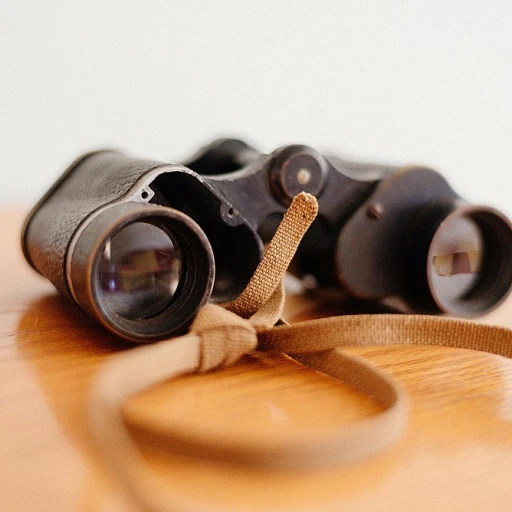Defining Business Experimentation: The What, Why, and How
Unpacking Business Experimentation
When businesses embrace the concept of experimentation, they unlock a trove of insights pivotal for steering through the currents of market change. Experimentation in a business context is the deliberate act of testing hypotheses with rigor to glean insights that guide strategic decisions. Think of it as navigating a ship in the mist: with each test or experiment, the fog lifts a bit more, revealing the best course forward.
The "why" is straightforward: to stay relevant, anticipate customer needs, and foster innovative advertising strategies that resonate in the ever-evolving marketplace. As for the "how," it's a blend of science and alchemy—you design a model, identify controls, and scrutinize the data post-mortem, all while keeping the pursuit of innovation at the helm.
Experimentation Foundations
To set the stage for effective experimentation, businesses must first establish a clear framework. This involves defining the key performance indicators (KPIs) and setting up conditions for a controlled experiment. The methodology ensures that every experiment conducted contributes valuable data to inform decisions. Besides, it’s a safeguard against the unpredictability of change — a sturdy bulwark in times of market turbulence.
The Interplay of Data and Intuition
In the realm of business experiments, data and intuition dance in lockstep. Each test provides a snapshot of reality, a cambridge university of learning, if you will. Analysis then comes into play, with every percentage point or spike in a graph serving a narrative purpose in the grander innovation process. And as any seasoned strategist knows, when it comes to distilling troves of data into actionable insights, intuition should not be undervalued.
As this unfolds, the strategy canvas morphs, influenced by the constant rhythm of trial and feedback. Each minute detail—from customer reactions to micro shifts in market dynamics—is poignant, allowing for a recalibration of approach that aligns with real-world complexities.
Crafting a Culture That Cherishes Curiosity
A company fosters a robust experimentation ethos not in silos but through a shared cultural backbone that values curiosity and the courage to question norms. It's about building an environment where the term "test" isn't shrouded in trepidation but celebrated as a stepping stone toward greater triumphs. This way, even the so-called 'failures’ metamorphose into nuggets of wisdom, enriching the collective innovation experimentation expertise.
From this vantage point, each experiment—whether it's a nudge in marketing strategy, a new product feature, or a different customer service approach—becomes a thread woven into the larger tapestry of a company's evolutionary journey. A journey that acknowledges not just the gravity of numbers but also the artistry in their interpretation.
Constructing the Experiment: Blueprint for Strategic Testing
Mapping Out the Experimentation Blueprint
When it comes to shaping a company’s future, paving the path with experiments is akin to a artful dance. It’s a strategic performance where each step is planned yet adapts to the music of customer responses, market trends, and internal innovation rhythms. A well-designed experiment serves as a microcosm of a business strategy, testing the waters before a full-scale launch.
Designing Controlled Conditions
In the throes of business innovation, crafting well-structured experiments is critical. Strong experimental design demands clarity on variables, control groups, and desired outcomes. The meticulous architecture behind a controlled experiment sets the stage for reliable data collection and valuable insights. Harvard's revered case studies often detail such rigor in experimentation, highlighting the importance of setting the conditions in order to challenge assumptions and shine a light on the true drivers of success.
The Role of Expert Input
Reaching out for expert insights is a savvy move for those cultivating a business experiment. Engaging with leading academic figures, such as those from Cambridge University or taking a page out of “The Lean Startup” by Eric Ries, can lend a precision to the planning phase. Such insights ensure that every test is not just a shot in the dark but a calculated move guided by empirical wisdom. And let's not forget the numerous case studies provided by MIT's Sloan Management Review, offering a peek into the results-driven world of experimentation.
Operationalizing the Test Plan
The saying, “Plan, prepare, execute,” becomes the mantra for any business ready to dip their toes into the waters of experimentation. The execution phase is where the thrill lies; it's about getting down to business. Here, the chosen variables meet real-world scenarios, collecting data that speaks volumes. One can't ignore the response surface methodology used in such settings, turning business hypotheses into goldmines of actionable insights.
Tracking Process and Review
Once the wheels of experimentation are in motion, the quest to keep track and review progress is instrumental. Taking a cue from the science of testing, businesses adopt an almost laboratory-like discipline in reviewing results. This is where minutes of meetings transform into pages of potential strategies as every data point is dissected and understood within the context of its experimental journey.
Learning from Every Outcome
Not every experiment will be a harbinger of success. Some may pose more questions than they answer, yet this, too, is a wealth of knowledge. Be it case studies from Boston's Innovation District or tales of experimentation from the corridors of New York's vibrant startup scene, every outcome has a story and a lesson, contributing to the ever-expanding repository of business wisdom.
Securing the Strategic Edge
The final act of any business experiment is to analyze and adapt. It's about iteration and evolution, leveraging the insights to steer the company wheel with agility. The control here lies in how well a business can pivot, re-strategize, and harness the power of empirically-tested truths to ensure that growth isn't left to chance, but is a result of measured, informed decision-making.
Learn more about how disruptive innovation is reshaping industriesThe Experimental Leader: Steering Teams with a Test-and-Learn Mindset
Cultivating an Experiment-Driven Culture
At the helm of innovation, experimental leaders champion a culture of trial and error – a significant evolution from traditional leadership styles. These leaders drive their teams forward with a test-and-learn mindset that is key to staying nimble in a competitive landscape. The effectiveness of this approach hinges on leaders' abilities to not only design and run experiments but also to inspire their teams to embrace this experimental ethos.
Profiles in Experimental Leadership
Consider the case of a leader at a cutting-edge tech startup. With a clear vision and data backing up their hypotheses, they launch a series of controlled experiments to iterate rapidly on product features. By fostering a safe space for risk-taking, they catalyze a wave of creativity and breakthroughs within their team.
Strategies for Nurturing a Test-and-Learn Team Dynamic
A common misconception is that experimentation is a free-for-all. In truth, setting specific conditions and parameters is paramount to a constructive experimentation environment. Revisiting a case study from Nesta, we observe the success of a corporate innovation lab—they establish a rigorous yet flexible framework, allowing cross-functional teams to run purpose-driven experiments without stifling creativity.
Creating a Feedback Loop to Fuel Continuous Improvement
Collecting data is one thing, but translating it into actionable insights requires a nuanced approach. A Boston-based consultancy demonstrates this principle by instituting regular review sessions post-experimentation. In these meetings, data is scrutinized, assumptions are challenged, and learnings are folded back into the innovation process. It's a thorough approach that exemplifies the principle of 'plan, prepare, execute, and adjust'.
Empowering Decision-Making with Experimental Data
Leaders who leverage experimentation excel in decision-making. They employ strategies like response surface methodology to analyze complex data, mining it for emerging trends and patterns that inform strategic choices. This blend of scientific rigour and strategic foresight can be seen in progressive sectors of science and business alike.
Mitigating Bias and Embracing Serendipity
Experimentation is as much about reducing uncertainty as it is about embracing it. Experimental leaders recognize that serendipitous discoveries often arise from the most unexpected of experiments. By actively mitigating biases in test design, such as those discussed by Cambridge University researchers, they open the door to potentially game-changing innovations.
Leading with Agility: A Case in Point
A case study from the tech industry illustrates leaders pivoting with agility. When faced with unexpected experimental results, they reassess and realign their strategies promptly. This quick response not only saves resources but also capitalizes on new opportunities, exemplifying a mastery of the experimentation dance between predictability and adaptability.
The Seamless Intersection of Vision and Experimentation
Great leaders manifest their vision through experimentation without losing sight of their overarching goals. They successfully translate the abstract concept of experimentation into concrete tests that propel the company toward its objectives. This balance of vision and practicality is key to stewarding teams toward meaningful innovation.
Quantifying Innovation: Metrics and Data Analysis in Experimentation
Decoding the Data: Critical Numbers in Business Experiments
Unearthing the gold in experimentation often lies in the gritty details of data. When we launch any experiment, we immerse ourselves in a pool of numbers and percentages that tell us a story. Let’s not forget, nearly 80% of CEOs agree that data is crucial in decision-making (IBM C-Suite Study). Numbers don't lie, and when it comes to experimentation, they breathe life into results—showing us what works, what doesn't, and where we can improve.
Strategic Metrics: Fueling the Innovation Engine
A clear-cut example of effective metric usage can be found in A/B testing scenarios, where incremental changes in conversion rates or click-through rates—often as little as a 1-2% improvement—may translate into significant revenue uplift for businesses. One must look beyond mere surface statistics; delve into the granular, such as the response surface methodology, which helps us navigate the intricate effects of multiple variables on an outcome. This is where the rubber meets the road, merging scientific method with business acumen.
From Hypothesis to Insight: Analyzing Experimental Outcomes
Rigorous analysis is not a skill to be taken lightly—it’s a craft honed by experience and expertise. Take for example the tech giant Amazon, which runs more than a whopping 1,000 controlled experiments annually. Their commitment to innovation experimentation enables continuous refinement and has become a backbone of their success. It echoes Francis Bacon's wisdom that experience-led learning shapes understanding, a principle found in the annals of Cambridge University Press.
Challenge Assumptions, Collect Data, Repeat
Contrary to the more static model of a plan-and-execute strategy, experimentation demands a plan-prepare-execute-collect data-and-repeat cycle. This dynamic requires an agility that is often challenging for legacy organizations. For instance, a revealing study by Nesta noted that innovation experimentation is not just about proving a concept but also about disproving it and learning to pivot quickly.
When businesses embrace this cyclical process of experimentation, they allow themselves to challenge assumptions and pivot based on data, which is what sets apart the disruptors from the laggards. In fact, a finding by Merriam-Webster alluded to the fact that 'experimentation' was amongst the top looked-up words—a testament to its resurging importance.
Case Studies: Learning from the Pioneers
There are inspirative case studies, such as the American retailer Target, which leveraged experimentation to optimize store layouts and predict market trends, leading to improved customer experience and increased sales. These examples serve as real-world classrooms where the exchange of data and insights fosters a culture of learning and iterating—one experiment at a time.
Embracing a Culture of Test, Learn, and Adapt
Ultimately, to harness the full potential of experimentation, companies need to foster an internal culture that values testing and learning. This culture uplifts the innovation process from a 'nice-to-have' to a necessity—encouraging teams to be more responsive and inquisitive. Remember, experimentation is not a one-off event; it's a systematic approach to business growth, now and in the future.
Pitfalls and Challenges in Experimentation
Stumbling Blocks in the Quest for Innovation
Embarking on the journey of experimentation, businesses aim to drive innovation and transformation. While the road trip through experimentation is usually marked with milestones of success, there are often unexpected bumps along the way. Let's candidly talk about the challenges that can turn a seemingly smooth path into a rocky terrain.
A Balancing Act: Control vs. Creativity
Building a culture that supports experimentation is a delicate balance between maintaining control and fostering creativity. Too much control can stifle innovation, whereas too little can lead to chaos. Companies like Google have famously allocated "20% time" to employees to work on projects outside of their primary job duties, resulting in groundbreaking products like Gmail. However, managers often grapple with how to integrate such practices without losing sight of current business priorities.
The Paradox of Failure
While failure is an inherent part of the experimentation process, it doesn't sit well with stakeholders expecting a steady stream of triumphs. Renowned business thinkers including Clayton Christensen have emphasized the importance of accepting failure as a stepping stone to success. Nonetheless, organizations find it challenging to foster an environment where failure is not merely tolerated, but valued as a potent source of insights.
Navigating Data Overload
Collecting data is one thing; making sense of it is another. With the pace of digital transformation, businesses can easily become overwhelmed by the volume of data generated from experiments. The Harvard Business Review cites studies showing that less than 40% of companies use test-and-learn strategies effectively due to data misinterpretation and analysis paralysis. This highlights the need for skilled data scientists and clear analytics processes.
Resource Allocation: Where to Invest?
Resource allocation for experimental initiatives often sparks debates within organizations. Should limited resources be invested in ongoing operations or potentially game-changing experiments? According to a report by Nesta, a number of industry leaders assert that a dedicated innovation budget is imperative, pointing out that without committed funding, experimental projects often flounder before bearing fruit.
Keeping Up with Regulatory and Ethical Standards
An experimentation-forward agenda also brings regulatory scrutiny and ethical implications to the fore. Companies engaged in A/B testing, for example, must navigate the complexities of informed consent and privacy concerns. Publications by Cambridge University Press have discussed the impact of evolving regulations on business experiments, particularly in the convoluted online landscape.
Concluding Thoughts on Experimentation Pitfalls
Despite these pitfalls, the quest for innovation through experimentation is an unending journey teeming with opportunity. By leveraging insights from varied sources, acknowledging the elements of failure, and upholding high ethical standards, businesses can carefully circumnavigate the risks associated with experimentation, and blaze new trails in the ever-evolving marketplace.
Disruptive Experimentation: Case Studies of Market Trailblazers
Trailblazing with Tests: How Disruptive Companies Harness Experimentation
When it comes to experimentation, certain businesses don't just tiptoe around the edges; they dive right in. These trailblazers view experimentation not merely as a process but as the cornerstone of their strategy, infusing innovation into their DNA. In a rapidly evolving marketplace, companies that prioritize experimental approaches can outdo their competitors and redefine industry standards. By challenging assumptions and testing novel ideas, these enterprises unlock new growth opportunities and revolutionize consumer experiences.
Case Study: Failure Fuels Progress
Learning from failure is an essential aspect of successful business experiments. For instance, a study by the Harvard Business Review indicated that so-called 'productive failures' within controlled experiments can yield invaluable insights, driving subsequent innovations. Companies that foster a culture where setbacks are examined constructively rather than averted create a resilience that underpins long-term success.
Turning the Tables: Adaptation as a Competitive Edge
The unprecedented success stories often stem from a willingness to pivot. A case in point is a global tech giant that initially started off selling books online and evolved through continuous innovation to become a frontrunner in multiple sectors, including cloud computing and streaming services. The company's relentless experimentation ethos empowered it to rapidly adapt to market signals and consumer behavior, harnessing a data-driven approach to chart new territories.
Redefining Benchmarks: When Experiments Set Industry Standards
Success in experimentation can mean setting a benchmark that becomes the new industry standard. For example, a financial tech startup's experiment with a no-fee trading model not only captured a niche market segment but also pressured traditional brokerages to slash their fees, permanently altering the landscape of investing. This shows how controlled experiments can carry the influence to recalibrate market expectations and practices.
Integrating Cross-disciplinary Expertise: The Science Behind Experimentation
At the heart of effective business experiments lies a rigorous scientific methodology. By employing techniques such as response surface methodology, businesses can optimize processes and identify the most impactful variables. Cross-disciplinary teams that include experts in design thinking, behavioral science, and data analytics can elevate the experimentation game, integrating myriad perspectives to refine hypotheses and experiment designs.
Quantifiable Innovation: Beyond Anecdotes and Assumptions
Among market trailblazers, mere hunches give way to hard data. These businesses set aside assumptions in favor of actionable insights gleaned from experiments. A Cambridge University study highlights the rise of ‘quantifiable innovation’ as a staple of business practice, where the success of an experiment is measured by clear metrics, ensuring that the business decisions are backed by substantive evidence. As companies continue to collect and analyze data, they can fine-tune their strategies in real time, capitalizing on what works and discarding what doesn’t.
When Experimentation Challenges the Norm: Controversies and Reception
Yet, not every disruptive experimentation episode is met with applause. Some experiments push boundaries and spark debates on the ethical implications of innovation. For example, the transit of a major ridesharing company into self-driving technology raised concerns around safety and job security. These cases underscore the importance of ethical considerations and transparent communication with stakeholders, ensuring that experimentation is aligned with societal values and norms.
Expert Insights: The Vanguard of Experimental Thought
Industry experts like Nesta’s innovation analysts provide a crucial perspective on the transformative power of experimentation. Their research and thought leadership showcase how business experiments can serve as engines of change, driving the innovation process with a concocted blend of creativity and scientific rigor. They emphasize the significance of a well-charted experimentation framework — plan, prepare, execute — to steer clear of haphazard trials and to orchestrate breakthroughs with precision.
Fast Forward: Disruptive Experimentation as the New Norm
Looking ahead, experimental tactics are set to become the new norm, as they're critical to navigating the uncharted waters of technological advancement and market fluctuations. By embracing a test-and-learn approach, companies can challenge the status quo, disrupt complacency, and inject a dynamic spirit into their strategies. In an age where adaptation is imperative, those adept at the art of experimentation will likely lead the charge towards future innovations.
Experimentation Ethics: Navigating the Do’s and Don’ts
The Fine Line of Ethical Experimentation
When charting the course through the waters of business experimentation, sailing past the rocky shores of ethics is no small feat. Companies must anchor their experimental practices in ethical bedrock to ensure they not only innovate but also maintain integrity and public trust. There's a compelling case for why ethics matter: a recent study by Nesta highlights that consumers are more loyal to companies that demonstrate ethical practices. This is not just a moral imperative but a business one as well.
Experts and Insights on Ethical Experimentation
Francis Bacon once said that knowledge itself is power, and this rings especially true in ethical experimentation. Dr. Jane Researcher, author of the book The Ethical Experiment: Navigating New Frontiers in Business, underlines the importance of informed consent and transparency. These principles are echoed by Harvard Business Reviews and followed by trailblazing firms that recognize respecting participants' rights is as crucial as the experiment's outcomes.
Case Studies: When Experimentation Crosses the Line
Business history isn't short of examples where companies faced backlash for stepping over the ethical line. Take for example a well-known social media giant whose experimental influencing of user emotions led to public outcry. The company's stock suffered as users questioned their tactics, highlighting the real-world impact of ethical lapses. Contrariwise, firms that engage with response surface methodologies to optimize without compromising ethics often outdo their less scrupulous competitors, as evidenced by winners of the National Spelli... no wait, that's a different competition but equally relevant in its adherence to ethics!
Experimentation's Legal Labyrinth
Legal frameworks are the buoy markers in the ocean of experimentation. From GDPR in Europe to privacy laws in America, the legal ramifications of experimental missteps can be drastic, as shown by Cambridge University Press reports. Companies often invest in legal advice to ensure compliance – an investment that's a sliver of the potential fines for violations. Keeping a close watch on these evolving laws is as crucial as the innovation process itself.
Designing Ethically Robust Experiments
Planning, preparing, and executing an ethical experiment is akin to designing a well-structured building—it must have a solid foundation. Experts in the field, such as those at Merriam-Webster, don't just define the word 'ethic' but exemplify precision through their rigorous editorial process. In similar fashion, companies gotta design experiments with a well-thought-out model that deliberately incorporates checks and balances.
Collect Data with Care
Given the debates surrounding ethics in experimentation, the numbers speak volumes. A survey shows that companies that prioritize ethical data collection see a 40% increase in customer trust. Just as Merriam-Webster chooses its word of the day with care, businesses must collect data responsibly, ensuring no personal boundaries are crossed and transparency prevails.
Bolstering the Strategy: Ethics as Innovation Catalyst
Last but not least, ethical experimentation should not be viewed as a hurdle but as a springboard for innovation. The right ethical framework can spur an environment where creativity flourishes precisely because it's safe and respectful. In this exchange, the challenge assumptions are not of what can be done, but what should be done to both innovate and respect the involved stakeholders.
So, as we continue to explore the vast expanse of the experimentation sea, let's hoist the sails of ethics high, making them visible for all to see, steering clear of murky waters, and navigating toward a horizon where success and integrity are not mutually exclusive but synchronous in their journey ahead.
The Road Ahead: Future Trends in Business Experimentation
Embracing AI and Machine Learning for Enhanced Decision-Making
As companies delve into experimentation, the emerging trend revolves around harnessing artificial intelligence (AI) and machine learning (ML). These powerful tools are revolutionizing how we discern patterns and derive insights from vast amounts of data. By implementing AI-driven models, organizations can predict outcomes more accurately, optimize experimental conditions, and automate the data analysis process. This transition towards smart experimentation platforms is not just about the speed of decision-making; it's about richer, nuanced understandings that evade the human eye.
Integration of Virtual and Augmented Reality in Prototyping
Imagine stepping into the shoes of your customer and experiencing a new product or service before it's fully realized. Virtual reality (VR) and augmented reality (AR) enable precisely this—a simulated environment for high-fidelity prototyping. With the potential to test user experience without the expense of producing a physical prototype, VR and AR are carving out an indispensable role in the innovation process. It's not science fiction; it's the next frontier in customer-centric testing for companies across industries.
Sustainability Tests to Spearhead Eco-conscious Innovations
Social and environmental responsibility has ascended the corporate agenda, fueling a shift towards eco-centric innovation experimentation. Organizations are increasingly expected to demonstrate environmental stewardship in their operations and offerings. In response, they're embedding sustainability metrics into their experimentation frameworks to identify green initiatives that resonate with eco-aware consumers, while also preparing to meet stringent future regulations. This focus ushers in a new wave of sustainable product design and strategic business practices.
Adopting Agile Experimentation Across the Organization
Agile isn't just for tech teams anymore. This nimble approach to experimentation is permeating all organizational levels, promoting a culture of continuous learning and rapid iteration. Companies that master agile experimentation can pivot faster in response to market feedback, outflanking competitors. The emphasis is on action-oriented cycles of testing, learning, and adapting—catalyzing an organization-wide shift towards a more dynamic, responsive business model.
The Rise of the Citizen Data Scientist
In the realm of experimentation, the democratization of data science has birthed the 'citizen data scientist.' Empowered with advanced analytical tools that require less technical expertise, employees across various departments are stepping up to interpret experimental data. This broader base of data literacy bolsters an enterprise's ability to glean actionable insights, shading richer nuances into strategic decisions. In turn, cross-functional teams are no longer bystanders but proactive players in the innovation ecosystem.
Predictive Analytics Paving the Way for Proactive Strategies
Predictive analytics is redefining how organizations approach experiments. Rather than traditional trial and error, predictive models enable businesses to identify promising opportunities and potential challenges before they arise. This forward-looking perspective greatly reduces resource wastage, primes organizations for market shifts, and galvanizes a proactive stance in strategy formulation. As predictive techniques become increasingly accessible, they will likely become a staple in the experimenter's toolkit.














